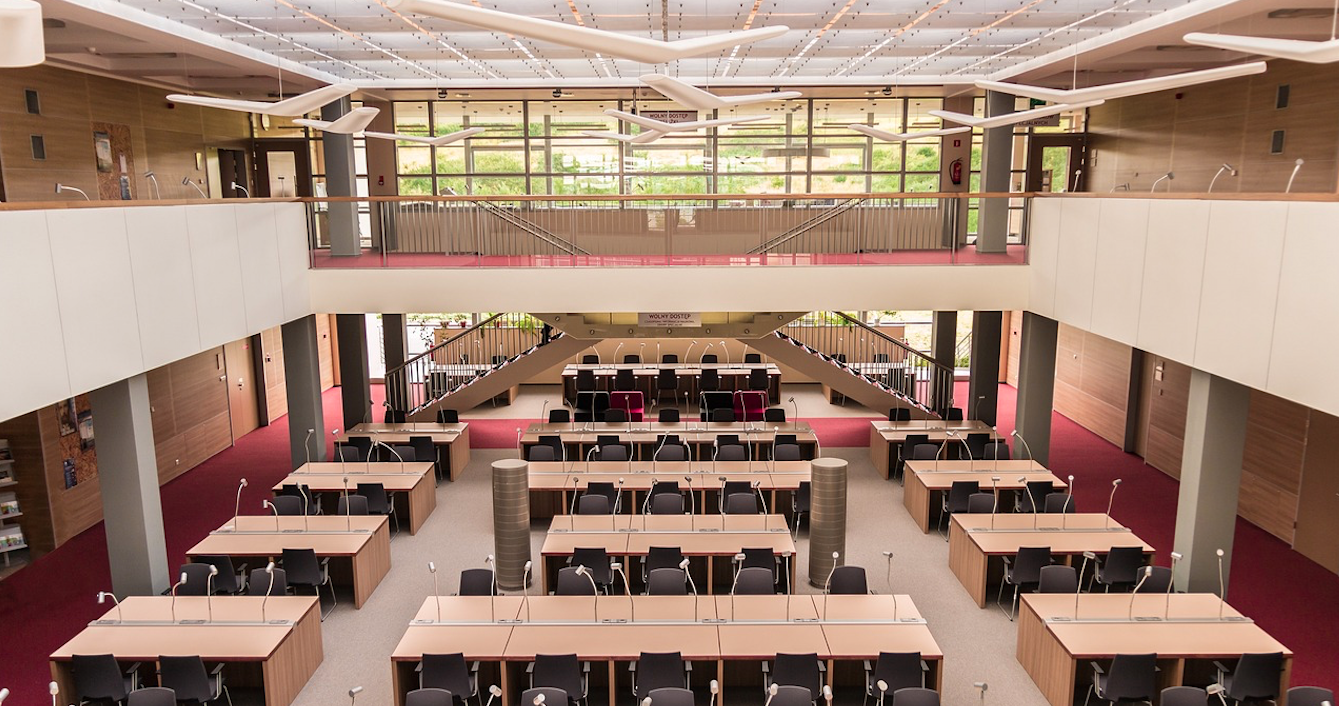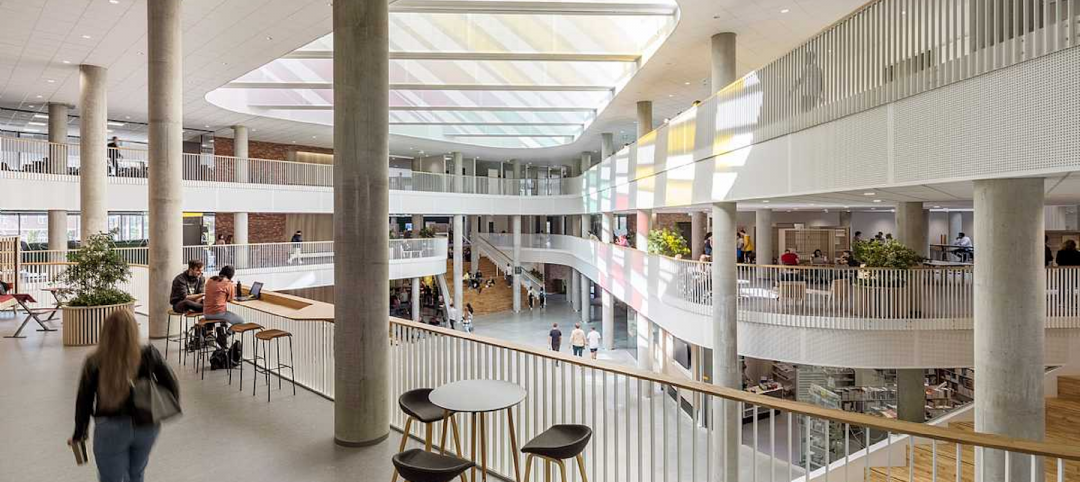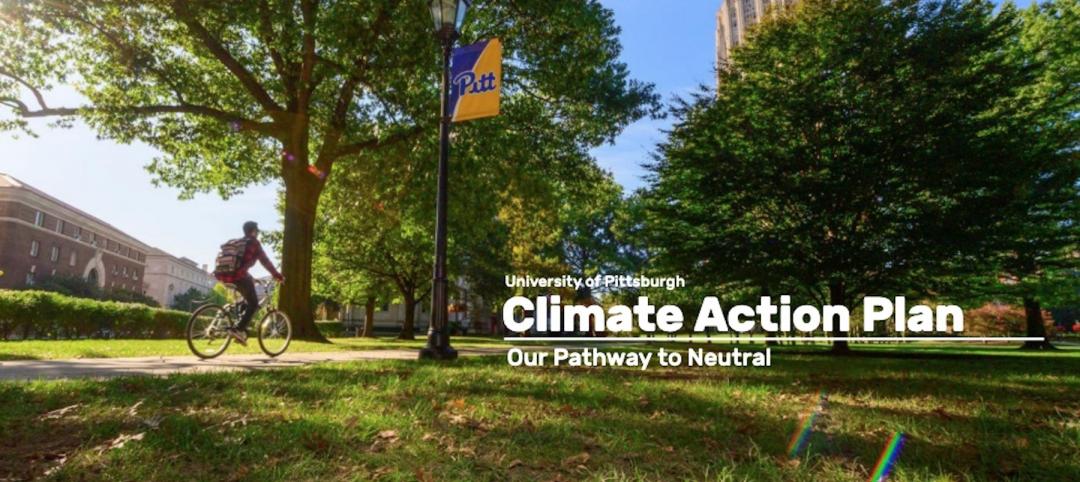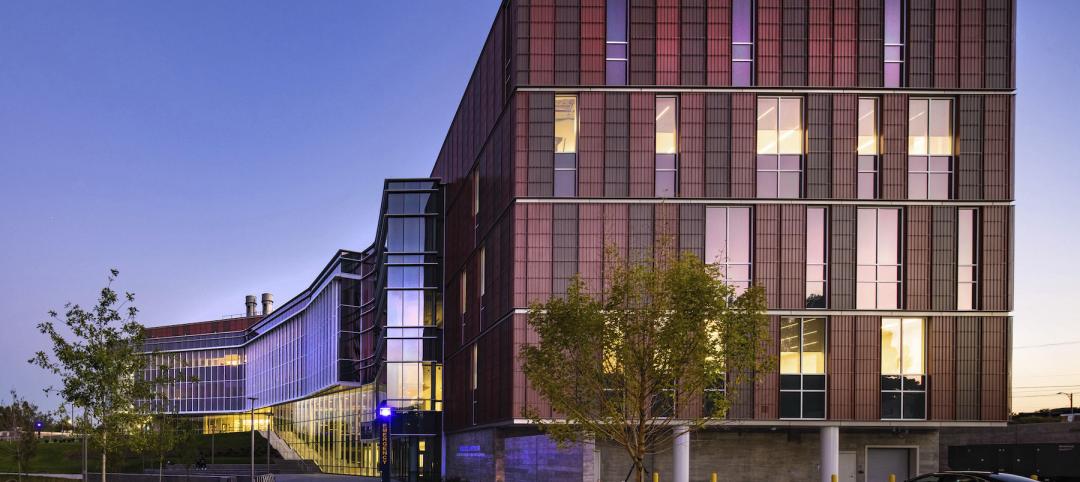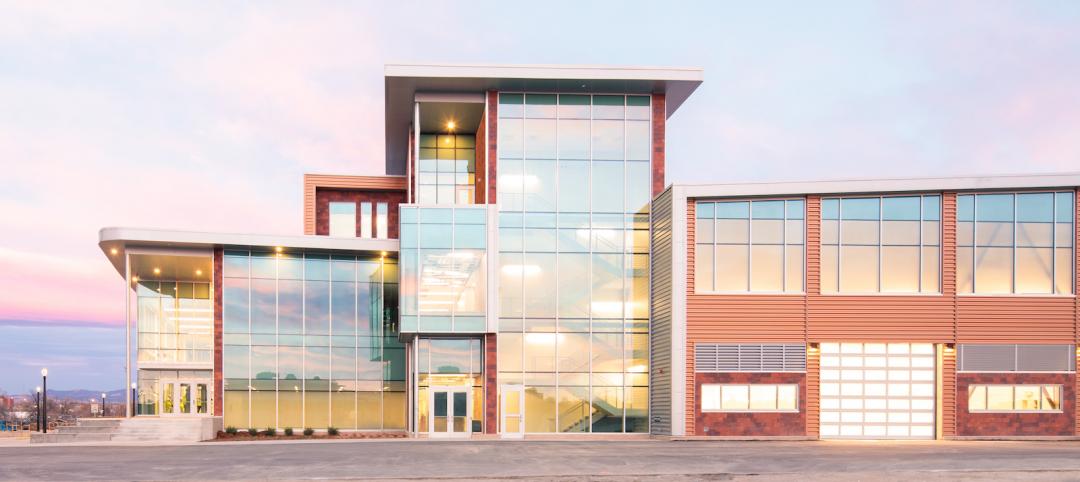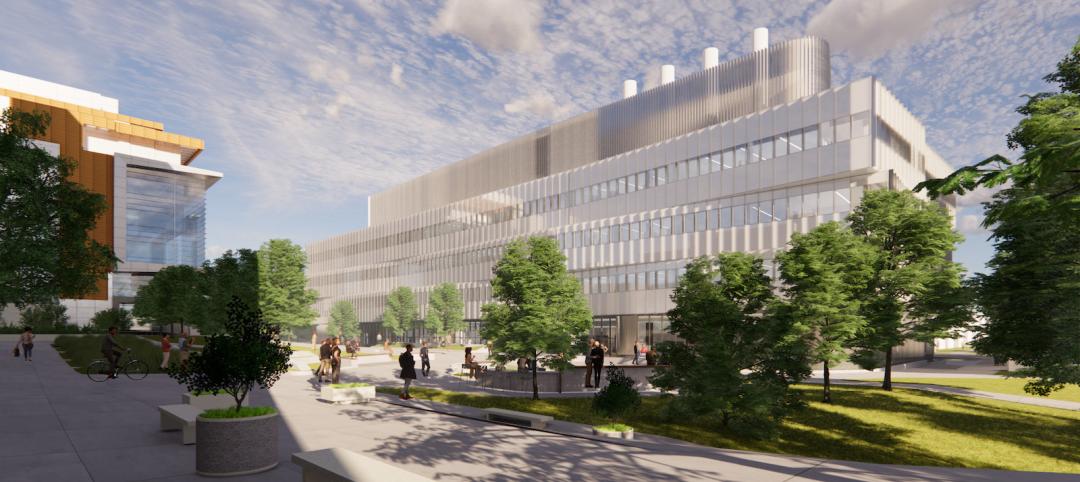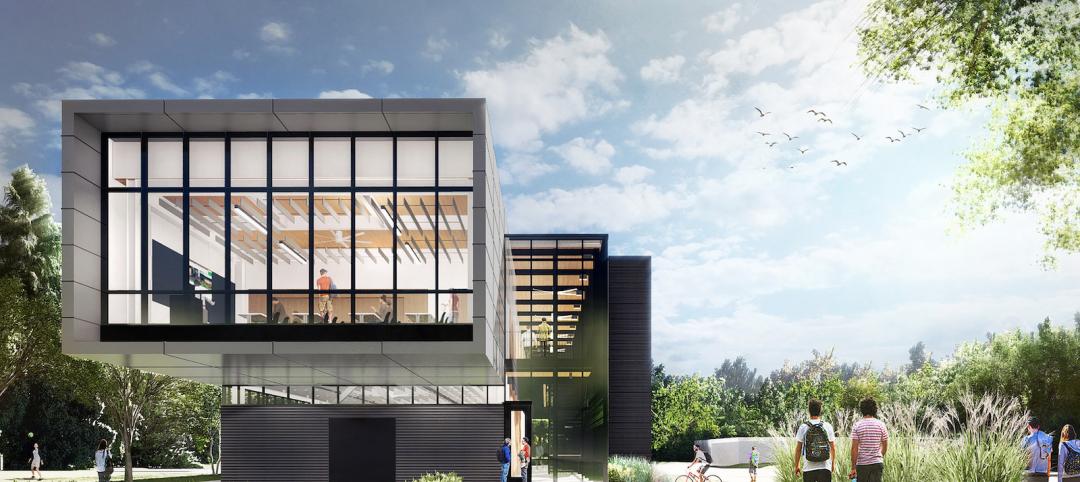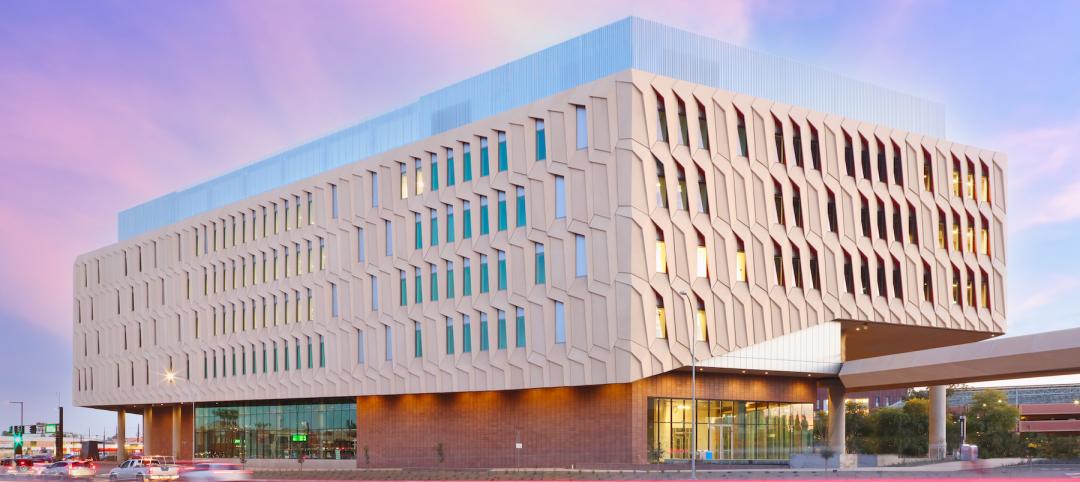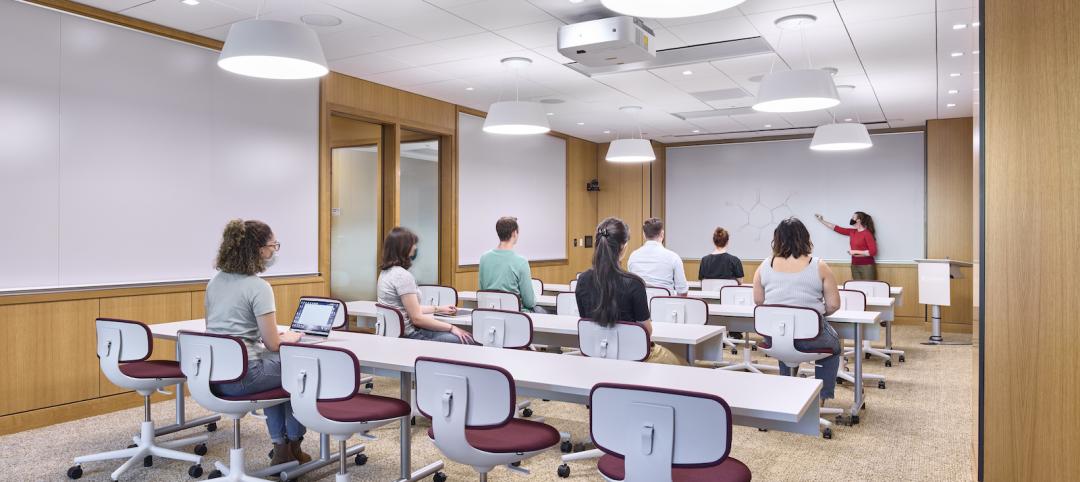Many North American colleges and universities are pursuing a high-risk strategy to build new campus facilities as a way to reverse lagging student enrollment, according to a new report from Sightlines, a Gordian company and a facilities intelligence and analysis firm focused on higher education institutions.
The 2017 State of Facilities in Higher Education report from Sightlines found that, overall, there was more than 10% growth in campus space from 2007-2016 (the most recent period for which data is available), eclipsing enrollment growth of just 8% for the same 10-year period. This is the fourth consecutive year Sightlines has documented a trend of space growth outpacing enrollment growth on North American college campuses.
“In light of the facilities management challenges facing higher education institutions—notably large segments of aging building stock and flattening if not declining enrollment trends—it’s extraordinary to see that many higher education decision-makers are choosing to add new buildings to their campuses,” said Mark Schiff, President of Sightlines. “While our research indicates that institutions are taking steps to invest more strategically in facilities resources, the vast majority continue to underestimate the renewal needs of deteriorating spaces while pushing high-risk investments into new facilities.”
The gap between space growth and enrollment growth is even more pronounced for master’s and baccalaureate institutions. Master’s institutions saw an average enrollment growth of less than 4% from 2007-2016, but a stunning growth rate in campus space of more than 12% over that same time period.
‘While our research indicates that institutions are taking steps to invest more strategically in facilities resources, the vast majority continue to underestimate the renewal needs of deteriorating spaces while pushing high-risk investments into new facilities.’
— Mark Schiff, Sightlines
Baccalaureate institutions have experienced minimal enrollment growth since 2007 but still averaged a 6% growth in campus space over the past decade. The only exception was research universities, where 14% enrollment growth from 2007-2016 exceeded an average of 11% growth in campus space for the same period.
Sightlines’ fifth annual report includes data from 366 higher education institutions in the U.S. and Canada, with a collective enrollment of 3.1 million students and 1.5 billion total square feet of campus space, including more than 52,000 buildings. Approximately 40% of the institutions in the study were private and 60% were public.
Other highlights in the 2017 report included the following:
• Campus facilities operations budgets have failed to keep up with inflation, creating stress on service levels. The report found that average campus facilities operating budgets rose from $5.51 in 2007 to $5.94 in 2016, a nearly 8% increase; the CPI-U as reported by the federal government over that time has grown nearly 15.5%, almost twice as much.
• A huge wave of campus facilities construction in the 1960s, which accommodated the surge in Baby Boomers, is reaching the end of its usefulness in the next decade, creating significant stress on institutions as to what to do with those buildings. This wave of aging buildings now represents 40% of the space on campuses.
• Another large wave of campus facilities construction in the 1990s-2000s will require massive maintenance outlays in the next decade, presenting a significant capital demand on institutions. This wave of further enrollment growth and expanding program demands represents another 30% of campus space.
• Many institutions are recognizing the expanding need for facilities maintenance resources and, since the downturn of 2008-09, have been increasing maintenance budgets to tackle the challenge. In fact, even in the face of tremendous space growth to match enrollment growth, facilities funding at research institutions is up 14%. While overall facilities funding levels are down from the 2007-2009 window where resources often effectively met need, funding at baccalaureate and master’s institutions has in recent years been on the rise.
• Oddly, institutions don’t extend this maintenance expansion trend to their landscape programs. In spite of the fact that landscaping is a relatively inexpensive place to invest operating dollars, grounds coverage areas have actually decreased 3-4% over the past decade.
“Given the demands of managing more space with fewer resources and at greater impact to the institution’s overall recruitment and retention goals, successful facilities departments are being pushed to develop creative responses to these challenges,” said Schiff. “Every campus we see developing effective solutions has in place programs to analyze objective data and utilize comparative metrics to track performance, communicate accomplishments and articulate needs to the community or leadership.”
Related Stories
Projects | Apr 1, 2022
University complex encourages exchange between academics and residents
In the small Danish city of Horsens, C.F. Møller Architects has created a university complex that unites higher education with urban life—creating synergies among students, staff, businesses, and residents
Energy-Efficient Design | Mar 25, 2022
University of Pittsburgh Releases ‘Pitt Climate Action Plan’
The University of Pittsburgh has released the Pitt Climate Action Plan, detailing how the University will achieve its goal to go carbon neutral by 2037 through investments in clean energy, transportation, efficiency and other areas.
Higher Education | Mar 24, 2022
Higher education sector sees 19 percent reduction in facilities investments
Colleges and universities face a growing backlog of capital needs and funding shortfalls, according to Gordian’s 2022 State of Facilities in Higher Education report.
Projects | Mar 16, 2022
Tomorrow’s STEM leaders get a state-of-the-art research complex
In February, North Carolina Agriculture and Technical State University (NC A&T) opened its new Engineering Research & Innovation Complex (ERIC).
University Buildings | Mar 7, 2022
A new facility can offer thousands of equine therapy sessions a year
At its new Spur campus in Denver, Colorado State University (CSU) will bring its expertise to the public by offering free educational experiences to visitors of all ages. Spur’s three buildings—Hydro, Terra, and Vida—will focus, respectively, on water, earth, and life.
University Buildings | Mar 4, 2022
The University of Wisconsin-Milwaukee celebrates new chemistry building with groundbreaking
The building will serve as a gateway for all STEM and health science related majors, housing the Department of Chemistry and Biochemistry.
Higher Education | Mar 1, 2022
SRG Partnership designs a nautically inspired space for maritime science
A community college in Oregon has begun construction on a new building devoted to maritime science. With it, the school hopes to solidify its position as a major industrial and marine technology center in the Pacific Northwest.
Education Facilities | Feb 24, 2022
New ASU science and tech building features innovative sustainability elements
Arizona State University’s Interdisciplinary Science and Technology Building 7, completed in December 2021, was constructed with numerous innovative sustainability elements.
University Buildings | Feb 18, 2022
On-campus performing arts centers and museums can be talent magnets for universities
Cultural facilities are changing the way prospective students and parents view higher education campuses.
University Buildings | Feb 18, 2022
UPenn converts a library past its prime to a tech-integrated learning and maker
In September 2021, Penn reopened its renovated and expanded library as an open center for cross-disciplinary learning, prototyping, and collaboration. Now called Biotech Commons, the 17,000-sf building supports new modes of research by offering a range of spaces and services that is free to be scheduled by any student or faculty member.


